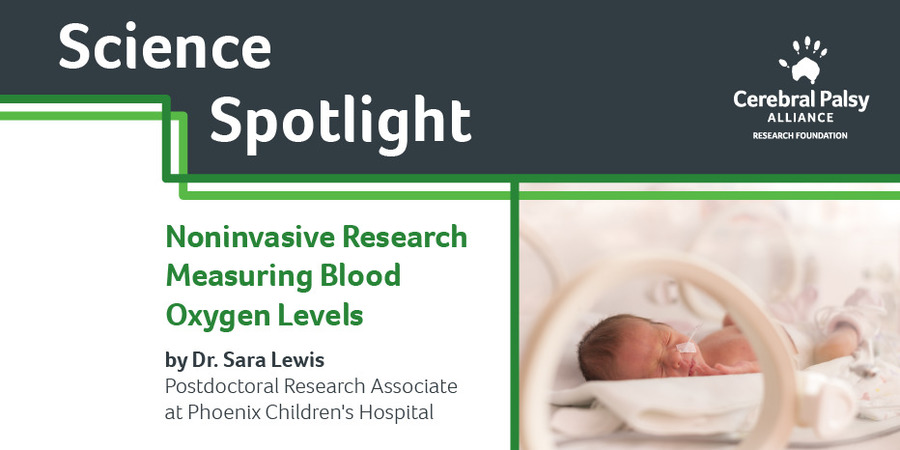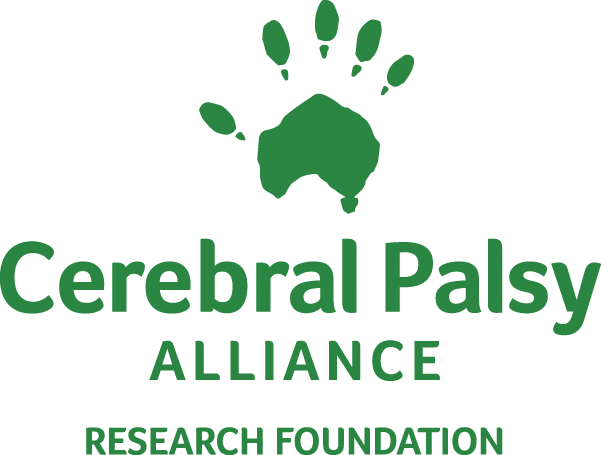
Science Spotlight: Noninvasive Research Measuring Blood Oxygen Levels
By Dr. Sara Lewis
Cerebral Palsy Alliance Research Foundation proudly funds research to help people with cerebral palsy at every age and stage of life. The following Science Spotlight focuses on one of many projects we’ve recently supported.
Individuals born prematurely, especially at or before 28 weeks of gestation, are at increased risk of developing cerebral palsy (CP) and other complications. Although there have been significant improvements in care for those in the neonatal intensive care unit (NICU), there are still major unanswered questions. What is happening in the brain during early prenatal life, what factors can lead to adverse outcomes, and can these factors be detected and treated? Addressing these questions can help identify who should be receiving special interventions and when those should be administered.
One of these gaps in understanding how best to care for premature infants is how to optimize oxygen levels in the brain. These babies are at risk for anemia and bleeds, which can cause low oxygen in the brain. Reduced oxygen, or hypoxia, can lead to neuron and glia death. Glia are important in the brain for creating white matter — the insulation around neurons that help them communicate properly. White matter injuries are a strong predictor for acquiring CP.
There are some questions that need to be addressed to guide treatments to optimize brain oxygenation during this critical period. What are signs of “normal” vs. “abnormal” for brain oxygenation? Can abnormal signs be used to guide decisions about when to intervene and how? Will having and using this information lead to better outcomes? Answering these questions can improve the ability to make predictions for both short term care decisions and long-term management goals.
To address these questions, Dr. Zachary Vesoulis at Washington University in St. Louis is using a device to measure brain oxygen levels called the near infrared spectroscopy (NIRS).
This device works like the pulse oximeter you wear on your finger to measure blood oxygen percentage. Hemoglobin is the protein that lets blood cells carry oxygen through your body and gives it the red color when oxygen is present. This color shift is important, because you can measure the absorbance of light at different wavelengths to calculate the ratio of hemoglobin that is carrying oxygen versus the hemoglobin that is not bound to oxygen. The reason why NIRS is better than a pulse oximeter for monitoring the brain is that NIRS relies on wavelengths of light that can go deeper into the tissue.
The NIRS is noninvasive and is placed on the forehead to continuously monitor blood oxygen levels in the brain. There are several reasons why the brain might be a more useful place to monitor oxygen than the rest of the body. It is known that there are times where the brain blood oxygen drops without detecting changes in the body. This could potentially be caused by disruptions to blood flow to the brain, such as brain bleeds. Also, the brain has a high need for oxygen and levels might drop there more quickly than can be detected in the rest of the body. The goal of this monitoring is to start interventions to improve the delivery of oxygen to the brain of very premature children when NIRS detects a problem.
There are clinical trials to determine if NIRS monitoring of brain oxygen is safe, can be used to standardize interventions for at risk patients, and if this is effective in improving outcomes. The SafeBoosC II study published in 2015 found that infants receiving NIRS monitoring had less time under hypoxic conditions with reduced death and severe brain injury. To follow up on this exciting preliminary study, an international effort is in progress to compare outcomes of premature babies after using NIRS for the first three days versus those only receiving standard monitoring. 1600 individuals have been enrolled in the study and data collection on outcomes and analysis is underway. In this study and others, investigators hope to identify which interventions were used, which interventions resulted in the best outcomes, and to study the impact of cerebral hypoxia on brain injury. Financial support from Cerebral Palsy Alliance Research Foundation (CPARF) is helping to support these studies.
If using NIRS monitoring as an early warning system to guide interventions is effective, then this has enormous potential to be implemented around the world to improve survival and neurodevelopmental outcomes of premature babies.
For more information, check out a CPARF-hosted presentation with Dr. Vesoulis.

Wed 21 May 2025
Are you ready for STEPtember 2025? We’re officially in double digits — CPARF is celebrating 10 years of funding groundbreaking cerebral palsy research and driving innovation forward. And there’s no better way to mark this milestone than with our biggest, boldest STEPtember yet. Thanks to you, STEPtember has grown into a global movement that powers […]
Thu 15 May 2025
Celebrate Your Birthday with Purpose: Start a Fundraiser That Changes Lives Birthdays are for joy, reflection, and connection — and now, they can help fund groundbreaking research, fuel innovation in assistive technology, and create lasting change for people with cerebral palsy and other disabilities. Celebrate your special day by starting a customized birthday fundraiser to […]



